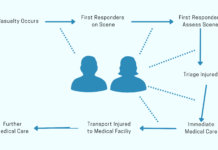“Loneliness and social isolation in older adults are serious public health risks affecting a significant number of people in the United States and putting them at risk for dementia and other serious medical conditions.”
That’s from the CDC, in their informational content titled, “Loneliness and Social Isolation Linked to Serious Health Conditions.”
But what are loneliness and social isolation? The CDC says,
“Loneliness is the feeling of being alone, regardless of the amount of social contact. Social isolation is a lack of social connections. Social isolation can lead to loneliness in some people, while others can feel lonely without being socially isolated.”
And here is the surprise: social isolation and loneliness are, for the most part, two entirely separate sets of circumstances. According to a new study, “The epidemiology of social isolation and loneliness among older adults during the last years of life” (paywalled, abstract here), significant numbers of the elderly, and, specifically, those within 4 years of death, were lonely and/or socially isolated. (This data comes from an ongoing study of the elderly, the Health and Retirement Study, or HRS, and uses only the subgroup of study participants who completed a survey, then died within 4 years.) Among this subgroup, 18.9% met the definition of being socially isolated — few or no household or local contacts such as children nearby; having infrequent contact with children, family, or friends by phone, e-mail, or in-person visits; and low levels of community engagement such as church attendance or community volunteering. In addition, 17.8% identified themselves as frequently feeling lonely.
Yet there is no correlation between these two characteristics — feeling lonely subjectively and objectively lacking in connections. (Strictly speaking, the correlation is 0.11, on a scale where 0 means no relationship at all and 1 means a perfect direct connection between the two.) Put another way, only 5% of people experienced both loneliness and social isolation, or, to do the math, 72% of those who reported being lonely were “objectively” not socially isolated — they went to church, volunteered in the community, talked to their children, but felt lonely anyway. And 74% of those who met the criteria to be labelled “socially isolated” did not feel lonely as a result.
What’s more, in 2018, Cigna commissioned a study on loneliness in adults, generally speaking. And here’s another surprise: they found that loneliness declines in older generations. Specifically, Generation Z (ages 18 – 22) had the highest “loneliness index”, at 48.3, and the index declined with each successive generation, with the Greatest Generation (ages 72+) coming in at a loneliness rating of 38.6. What’s more, those who are retired had the lowest loneliness index — 41.2 vs. 43.7 for the employed, 44.9 for homemakers, 47.9 for college students, and 49.1 for the unemployed.
In any case, this new data suggests that the “fixes” for loneliness and for social isolation — at any age — are simply not the same set of actions, whether by the government, non-profits, or communities.
Source: Bauer, E. (2021, July 15). The ‘loneliness epidemic’ among the elderly may not be what it seems. Forbes. https://www.forbes.com/sites/ebauer/2021/07/15/the-loneliness-epidemic-among-the-elderly-may-not-be-what-it-seems/?sh=606fe1a1b549.
Comment:
This article helps differentiate between loneliness and social isolation. It provides research statistics to back up the fact that they are in fact two different things, and points out their different causes. This is important information to know because looking into social isolation in a population, it is good to have an understanding of what that is— and that social isolation does not equal loneliness. It points to the fact that loneliness and social isolation need different interventions, and that loneliness is a bigger problem for younger generations and actually less for elderly, even though social isolation may go up with aging. I am wondering why that is and if this data will be similar when the current younger generations grow old.
The project I’ll be working on is focusing on social isolation. The article reveals what defines social isolation including infrequent contact with family and friends and low community engagement. These areas listed would be good areas to look into, as they are the roots and causes or factors relating to social isolation. This article was a good starting point to begin understanding social isolation more in depth.




